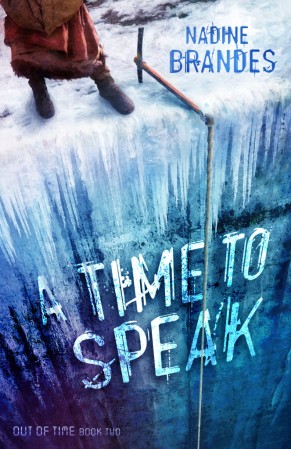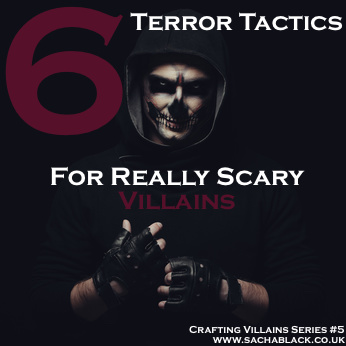A Time to Speak – A Review
So you know, I received a free copy of A Time to Speak from the wonderful Nadine Brandes in exchange for my honest review. My review of this book has not been effected in anyway by receiving this copy, nor the numerous plates of cookies offered to me by the author.
(Nadine, if you’re reading this, a batch of snickerdoodles would make my week go sooo much more smoothly. Just saying.)
“I’ve been robbed of my death. A date was set, a coffin prepared, a grave dug in the earth…”
Parvin Blackwater, A Time to Speak
Parvin Blackwater was dying. Her government issued clock said so. And she was ready.
It was her time to die…but she didn’t.
Nadine Brandes’s new novel, A Time To Speak, delivers an exciting and powerful story, continuing Parvin Blackwater’s harrowing journey which began in A Time To Die, as she fights the tyrannical grip of the USE (United State of the East) and wrestles with God to discover what the rest of her life is supposed to mean.
Much like another “hungry” dystopian heroine (whose name might rhyme with Batniss Beverdean), Parvin Blackwater returns home saddled with a strange mix of unwanted celebrity, PTSD, and new found responsibility. She barely has time to recover from the life shattering events at the end of A Time to Die before she is forced to defy the USE in order to help the ones she loves. And the adventure doesn’t let up until the last page of the book.
A Time to Speak pulls off a rare trick among sequels by holding on to the flavor of the original story while taking the characters in exciting new (and at times very very cold) directions and continual raising the stakes. And it does all this without getting convoluted or bogged down in endless plot lines.
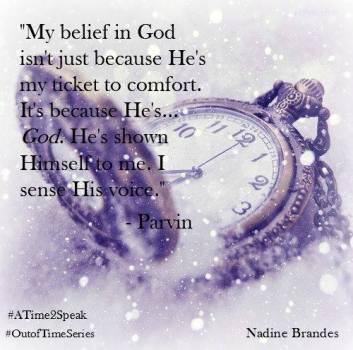 Where book one saw Parvin accept exile to protect her the life of her brother, book two forces her to accept a Moses-like role of leading her people as the heavy fist of the USE comes down on the citizens of her village.
Where book one saw Parvin accept exile to protect her the life of her brother, book two forces her to accept a Moses-like role of leading her people as the heavy fist of the USE comes down on the citizens of her village.
Book one sent our heroine beyond the protective walls of society into the “wild West”, but this second installment drags her to the High Cities of the East where she comes face to face with the twisted ruling council of the USE.
Where Parvin’s appeals to God in book one where mostly “complaint” prayers as she slogs through the more unpleasant stretches of her journey, book two shows Parvin mature in her faith and grow better at listening for and hearing God’s voice. This is an especially excellent feat because even as a Christian, I tend check out when stories get preachy. But Parvin’s prayers feel real, as does God’s voice when He speaks. Even the timing of when He chooses to speak (or not to) feels very much like my own interactions with the almighty.
And while romance is not a selling point for me, some readers will enjoy seeing Parvin navigate her feelings for a certain tall, dark, and handsome young man. Guys, you needn’t worry. The romance never gets too sappy and it never distracts from any of the action.
In short, if you enjoyed A Time To Die, then you will not be disappointed in the least by the further adventures of Parvin Blackwater and company.
You can learn more about Nadine and her Out of Time series here:
- Website: www.nadinebrandes.com
- About the book: http://nadinebrandes.com/series/out-of-time-series/
- Facebook Page: www.facebook.com/NadineBrandesAuthor
- Twitter: www.twitter.com/NadineBrandes
- Goodreads: www.goodreads.com/NadineBrandes
- Pinterest: www.pinterest.com/NadineBrandes
And if you’re looking for great Scifi/Fantasy stories, you need to check out Enclave Publishing. They’ve published Nadine’s books and a bunch of other great series that you’re sure to love.
Called to Speak about Racism
I almost didn’t write this post.
I’ve always kept my Blog posts, Facebook, Twitter, and everything else in the safe awkward nerdy corner, where I’m free to make a cutting commentary on the casting rumors about the latest Marvel comics film.
But sometimes we’re called to speak on things bigger than ourselves. Things we don’t understand. Things that scare us and open us up to ridicule.
So as part of a Blog Hop to promote Nadine Brandes newest novel, A Time To Speak, I’m choosing to speak out…about racism.
…
“[Satan] always sends errors into the world in pairs – pairs of opposites And he always encourages us to spend a lot of time thinking which is the worse.”
C.S. Lewis, Mere Christianity
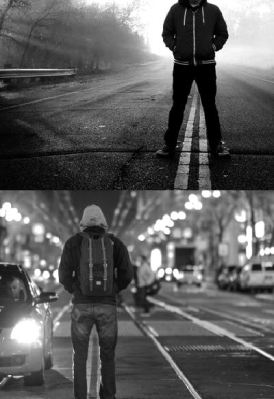 I grew up in a town without racism.
I grew up in a town without racism.
It was one of those scary things we learned about in history class. We learned about the Emancipation Proclamation and Martin Luther King and I generally took all that to mean that racial discrimination was a thing of the past.
Sitting there surrounded by a classroom full of kids who looked just like me, why should I have thought any different?
Going to college shoved me out of my little white bubble into a new wide world with people from all corners of the country and the world. Between classes, the dorms, and my church, I met more black people in that first semester than I had my entire life up to that point.
I got used to my new environment, forming lots of good friendships with people across all races. But I tended wall up when topics about race came up in conversation. Partly because I didn’t hold particularly strong opinions on the matter, but my silence was motivated by fear as much as anything. My rural conservative opinions didn’t always line up with those of my inner city black friends and, not wanting to sound like the judgmental white guy, I erred on the side of keeping my mouth shut…for years.
But the events of the last three years, the racial upheaval that’s come after the deaths of Trayvon Martin, Michael Brown, and too many others, have pushed my heart in a different direction. Those tragedies, along with the continued call on my church to pray for racial reconciliation, have forced me to recognize the need to take further steps in my understanding of what racism in America really looks like.
Those steps don’t involve getting online to see the fallout of the latest protest or counter protest. Nor do they involve getting in arguments over Facebook over whether or not police officers are really trustworthy.
My first step on this journey involved my friend Cornelius, some high quality breakfast foods, and a big pot of coffee.
I talked with my friend, who grew up on the south side of Chicago and lived in St. Louis for a spell, and asked him what racism looked like for him where he grew up. I asked him where he saw racism in his daily life here in Southern Illinois. We talked about Ferguson and institutional racism and the American church’s failure to promote unity among brothers and sisters in Christ. (And at one point we talked about women too, but that’s a topic for another time.)
We sat on my front porch and talked for hours, barely scratching the surface, but giving me plenty to talk about.
My default reaction to one of these tragedies is still to come out on the side of the police, but I’m can’t help empathizing with the families who’ve lost loved ones either through police shootings, gang violence, or other violent acts.
I still believe that a man or woman needs to work for a living, but it’s plain to see that there are literally millions of families in genuine need of a helping hand.
And while I know that racism is not nearly as rampant as it was fifty years ago, it’s clear that our journey toward Dr. King’s mountain top is far from over.
I hope these words have challenged you. Please comment if you want, but leave the hate at the door.
A better option would be to find an open Saturday morning and sit down for a meal with someone you know who doesn’t share your politics. Break bread together and take time to ask some really difficult questions. It’s doubtful you’ll come up with the answer to world peace over sausage links and ranch potatoes, but honest talk spoken with love is far more effective than hate speech and far better than silence.
…
[So…awkward transition here, but this post is part of a Blog Hop promoting Nadine Brandes new novel A Time To Speak. I highly recommend you keep scrolling to read more about the book. I’m not getting paid to promote anything, I just really enjoy Nadine’s books and think you would to.]
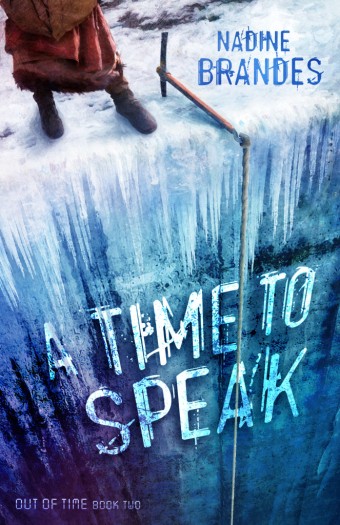 What happens when you live longer than you wanted to?
What happens when you live longer than you wanted to?
Parvin Blackwater wanted to die, but now she’s being called to be a leader. The only problem is, no one wants to follow.
The Council uses Jude’s Clock-matching invention to force “new-and-improved” Clocks on the public. Those who can’t afford one are packed into boxcars like cattle and used for the Council’s purposes.
Parvin and Hawke find themselves on a cargo ship of Radicals headed out to sea. What will the Council do to them? And why are people suddenly dying before their Clocks have zeroed-out?
Book Two in the “Out of Time” series.
Read about the first book, A Time to Die, here
You can learn more about Nadine and her Out of Time series here:
- Website: www.nadinebrandes.com
- About the book: http://nadinebrandes.com/series/out-of-time-series/
- Facebook Page: www.facebook.com/NadineBrandesAuthor
- Twitter: www.twitter.com/NadineBrandes
- Goodreads: www.goodreads.com/NadineBrandes
- Pinterest: www.pinterest.com/NadineBrandes
And if you’re looking for great Scifi/Fantasy stories, you need to check out Enclave Publishing. They’ve published Nadine’s books and a bunch of other great series that you’re sure to love.
A Time to Die – A Review
That’s all Parvin Blackwater has left.
Then she dies.
Author Nadine Brandes’s debut novel, A Time to Die, pulls its readers into a Dystopian world in which all citizens are assigned a clock at birth, showing each person exactly how long the have to live. To the second.
Parvin’s time is almost up…and she’s determined not to waste it.
A review I saw described A Time to Die as “dystopian fiction…with hope”. And this is the critical component that makes this book more than just a good read. Parvin’s journey illustrates that even when we are come face to face with death, our lives still matter and that those moments are often the time when God chooses to use us in the most powerful ways.
Granted, Parvin’s journey is hardly a stroll through the park. In the race against her own clock, Parvin is harassed by cruel government agents and ultimately leaves her home, left alone against wolves, assassins, the raw elements of nature, and learns the ropes in the trader city of Ivanhoe, which feels like a re-imagination of Bartertown from “Mad Max: Beyond Thunderdome.”
To use a phrase that the cool kids are using these days, “the struggle is real” for Parvin. Very real. So much so in some sections, that I probably wouldn’t recommend the book for reader’s younger than 12 depending on the sensitivity of the child (parents should make their own judgments). But Parvin’s resilience and the story’s strong faith elements help balance the narrative, guiding it away from the “doom and gloom” of many of Young Adult novels.
Central to this hopeful atmosphere for the book, is Parvin’s own faith in God, which is excellently shown throughout the book. Brandes lets us in on Parvin’s prayer life as she endures her trials. And the best part is that a lot of Parvin’s prayers sound like my own. Fear prayers. Whining prayers. Sarcastic prayers. A Time to Die handles its faith elements better than nearly any other Faith based book I’ve ever read.
The story itself is magnificently crafted, with complex, well developed characters. Several tropes common to the dystopian genre are implored (the brave young heroine, the brooding but handsome hero, the twisted calculating government official), but the story leads these tropes into new and exciting territory.
The only complaints I have toward the book come mostly near the end, where several abrupt plot twists happen right before the last pages, leaving the reader with a knot of unresolved emotion in their chest and a slew of nagging questions which go unresolved until the second book.
Maybe that’s a valid complaint. Maybe not. In either case, the story takes its reader on a fantastic ride which leaving them itching for the next book in the trilogy.
Fortunately for you, book two just so happens to come out next week. Be on the look out for my review of A Time to Speak here in the next few weeks.
If this looks like your kind of book, you should saunter on over to EnclavePublishing.com for more awesome Faith based SciFi/Fantasy titles.
Some of your are confused right now.
 “Andrew, didn’t you say you weren’t going to ACFW Conference this year?” Yep.
“Andrew, didn’t you say you weren’t going to ACFW Conference this year?” Yep.
“Didn’t you post on Facebook explaining how you felt God telling you to stay home instead of going.” Absolutely.
“Didn’t you spend part of that week commenting on people pictures and texting your friends saying you wished you were there.” Guilty.
So why am I writing a wrap up post for a conference I didn’t attend? That’s a great question…and I wish I had a great answer.
Ever since I decided (reluctantly) not to go, I have been trying to figure out what God had in mind for me. I spent a lot of time last week asking God “Why am I still here?”. Why am I not around my friends and my family of writers? Why am I missing out on a chance to get some face time with agents and editors and other industry folks? Why don’t I get a chance to get away from the junk of life for a week and just live in the awesome fantasy world where everyone likes to create stories with their brain?
A few answers came to mind. It is a busy season with my “real job” right now and it’d but my boss in a major pinch to abscond to Texas for a week. I’m certain that some of it was God simply reminding me that this desire in my heart to tell stories was originally His idea, not mine, and that ultimately my writing career will unfold on His time table, not mine. And on some level, I’m sure that part of it was just God testing me to obey in sacrificing something I really really (really) care about, even when I don’t fully know why.
But in the end…I still don’t get it.
There’s been no silver bullet answer. No “Full House” moment where God sits me down on the couch and say “Well Andrew, the reason you didn’t get to go to Dallas is…” I’m just here, resigned to the fact that, like so many things this side of Heaven, I may not know what God, in His sovereignty, was (or wasn’t) up to.
So I get back to it. Plugging away at revisions on my novel. Fine tuning my short stories. Working hard with a launch team for an upcoming novel (some of which you’ll be seeing on this blog). All the while confidant that God, who called me to tell stories, will has my best interests in mind will ultimately work things out.
ACFW Conference Wrap Up
WordVomit.com
One day, I’m going to make a website where I can say whatever I want. Twitter or Facebook (or a blog) is supposed to do this for us, but we all know they really don’t.
There are so many things we’re not supposed to say. Things that would scare your friends if you said them out loud or just depress them.

Courtesy of Colin Logan via http://www.imcreator.com
“I’m pretty sure I’m going to be a horrible husband.”
“My dreams are all empty.”
“I know there are a lot of people who have it worse off than me, but I really don’t care.”
“At least I know I’m a disappointment.”
“Pretty sure most of my friends wouldn’t notice if I was gone.”
I’d post this stuff and more, not because any of it is true, but just to get it said. No need for a long string of comments asking “You okay, bud?” or “Hang in there”. No need for fortune cookie encouragements like “The night is darkest just before the dawn.” No need for my family and loved ones to look over my page and wonder if I’m doing okay.
We don’t say these things because we believe them. We say them because we’re afraid they’re true and we think we’re protected if we just accept it.
For as many awful days as I have where I believe all these lies, there are just as many (and more) days where life is actually pretty darn good.

Courtesy of http://gratisography.com/
But on those bad days…the lies seem so real.
So maybe if instead of saying proclaiming lies on my fancy website to protect myself, maybe I can say them to call them out and reveal them for the twisted fiction that they are. Put it all up on a bill board like “Hey! These things aren’t true!”
It’s actually not a very good idea for a social media page, but it’s a thought. I’ll put it on the back burner.
For now, I’ll get this stuff off my chest in long angry prayer sessions, in quiet talks with good friends, or just shouting it into my steering wheel on the way home from work.
You know, the old fashioned way.
6 Terror Tactics For Really Scary Villains
I first watched the Exorcist when I was about 9, I don’t know whether it was the projectile green vomit or badly done makeup, but I wasn’t impressed. These days it might be a little different. I was skeptical about everything back then. These days I’m only skeptical about some things because I know there really are things that go bump in the night. Scary movies, books or stories, have a better effect. Leaving me switching lights on, scanning rooms and ceilings and ensuring there’s a hockey stick within reaching distance!
I’m my own worst enemy and can never please myself. I started this series because I wasn’t happy with my villain, guess what, I’m still not. So I started investigating what makes a really scary bad guy. This post aims to identify what sets apart your Lemony Snicket from your Michael Myers (Halloween).
View original post 1,173 more words
13 “Tells” of a Novice Writer
In the poker-playing world, professional card sharks have a term for a novice player who inadvertently gives away the cards he’s holding through some sort of gesture or tick of which he is unaware. The pros call it a “tell.”
 In the publishing world, professional editors and agents look for the “tells” of a novice writer whenever they scan a manuscript. With practice, we can almost always pick out the amateur from the pro from reading just a page or two. Here’s a list of 13 Common “Tells” of an Amateur Writer that may give you an inside advantage at the publishing table.
In the publishing world, professional editors and agents look for the “tells” of a novice writer whenever they scan a manuscript. With practice, we can almost always pick out the amateur from the pro from reading just a page or two. Here’s a list of 13 Common “Tells” of an Amateur Writer that may give you an inside advantage at the publishing table.
- Too many clichés. If you find yourself using a common cliché–try changing it up for humor or effect. Instead of saying, “He marches to a different drum,” you might say, “She rhumbas to a different drum-ba.” You want to avoid cliches but they can also be…
View original post 591 more words
Happily Ever After?
About a year ago or so I having a phone chat with another writer friend of mine, discussing a story I was working on at the time.
I described the dynamic between the two main characters, a guy and a girl, and I told my friend (who just so happens to write and read stuff on the more Romantic side of the Force) that my plan was to have romantic tension between these two, but that they would ultimately never get together.
There was a sudden silence on the other end of the phone followed by a perturbed “What?”
This led into a long and rather animated talk about the need for a story to have a “happy ending”.
I’m not really beholden to the idea of a perfect, fairy tale ending. I’m not opposed to happy endings, nor do I enjoy stories that try to be dark and depressing for the sake of being dark and depressing, but I enjoy an occasional tragic twist en route to “happily ever after”.
Most of this comes down to a simple question: Would you rather have a poorly done happy ending or a well done sad ending?
A brief Facebook chat with a fellow writer brought up the fact that a lot of movies today and afraid to go with a sad ending. There’s a fear of leaving the audience with any unresolved feelings as they walk out of the movie theater.
Like the movie makers are afraid to leave their audience with anything but the most sugary, cookie cutter conclusions. Chris Pine quits his big job on Wall Street to be with Natalie Portman and help her run her family’s candle making business. Sandra Bullock finally overcomes her fear of oceanic life and swims out to Gerard Butler’s fishing boat where they share in a sloppy wet kiss right before he proposes. I can’t really remember the last romantic film I saw where the couple didn’t get together in the end. (Granted, it’s not really my genre, but I feel like the point still stands.)
But if you think of some of the most timeless love stories in film history, aren’t there a bunch of them where guy and girl don’t get together in the end? Would we still be talking about Gone With The Wind in Rhett suddenly decided that he did give a damn? What about if Rick said “Here’s looking at you kid.” right before kicking Victor out onto the runway and flying off with Ilsa?
To paraphrase Roger Ebert, we shouldn’t “I don’t like sad endings” or “I can’t stand happily ever afters”, but instead say “I like well done endings”. Certainly there’s a place for both “Roman Holiday” and “Breakfast at Tiffany’s” on the same shelf?
And it all balances out. Sometimes we need to sit back and take it them complex emotional end to “An Affair to Remember”. Other days, I’m sure people just need snuggle up with “Sleepless in Seattle”.
But in the end, let’s not forget that it’s a movie. It’s entertainment. Whatever your preference, enjoy it. Always be on the lookout for that next favorite, but while you’re at it, don’t be afraid to try something new. Who knows. The end might just surprise you.
Link to “Ball Glove”
Published a story today on Splickety Publishing Group’s Lightning Blog.
Just in time for baseball season, “Ball Glove” reflects on growing up with America’s pastime.
Read it, Like it. Tell your friends about it.
